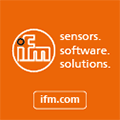
Posted to News on 22nd Mar 2007, 21:56
How to convert serial data for transmission on Ethernet
As industrial applications migrate to industrial Ethernet, the huge installed base of serial devices has been somewhat ignored. David Moss of GarrettCom Europe discusses how these devices can be successfully integrated at low cost, creating a 'dynamic serial edge' for integrated industrial networks.

Recent years have seen the rapid deployment of Ethernet as the core technology for industrial networks, and it is easy to see why. Ethernet/IP provides a broadly supported technology for system interconnection across many system suppliers. It leverages mass-market component volumes to create a cost-effective, high-performance network. And Ethernet lends itself to fibre-based connectivity that is important in electrically noisy industrial environments.
Ethernet also supports ring, dual-star and mesh topologies that are highly resilient against single-point network faults, thereby improving system reliability. It is therefore easy to see why Ethernet is quickly becoming the de facto standard for industrial networking.
Serial legacy
One of the consequences of this fast-paced move towards industrial Ethernet as the communications medium of choice is that, today, the vast majority of new control and I/O devices offer Ethernet connectivity as standard. What tends to be forgotten, though, is that there is a decades-long accumulation of industrial devices, representing a huge installed base, that utilise serial communications protocols. This is not an investment that any company can afford to simply discard, so standard serial devices have long had to co-exist with Ethernet-enabled products in any given installation.
So what does such an implementation look like today? A holistic view of the emerging industrial network sees Ethernet switches used as a universal connectivity medium at the core of the network, with this core surrounded by edge and access layers for Ethernet devices, serial devices and wide area network (WAN) connections.
In the Ethernet-edge part of this architecture, some industrial devices connect directly to the core network, generally using integral fibre optics or copper-to-fibre media converters. These are usually single connections, but in some cases dual connectivity is implemented to enhance reliability. Often, Ethernet edge switches are deployed near distributed industrial devices, sometimes serving multiple devices. The edge switches may provide dual-homed connectivity to the core network as well as copper-to-fibre media conversion. This edge architecture provides fibre-based network distribution for signal immunity in harsh environments and resilient connectivity for improved system reliability.
The wide area network (WAN) access element of the architecture provides connection to private facilities or carrier-provided WAN services in order to enable access by remote systems or personnel to industrial devices in the local network. WAN access requires physical layer interfaces to WAN facilities, IP routing for interconnection of different Ethernet networks, and perimeter-security capabilities such as an IP Firewall.
Integrating serial devices
The serial edge of the industrial architecture, meanwhile, has historically been implemented as a separate network. In some cases the Ethernet and serial domains share a common WAN access element but, as yet, most do not share a local Ethernet infrastructure.
There are numerous serial devices in industrial environments. Early systems used vendor-specific proprietary serial protocols for industrial applications. More recently, many systems have standardised on serial-mode DNP and Modbus protocols. In addition, most industrial devices utilise serial-mode console interfaces for device provisioning and administration.
Over the years, relatively static, dedicated networks have been developed for connecting these serial devices and interfaces to central data collectors and/or to basic remote access facilities. Devices are generally connected over dedicated copper or fibre cabling, sometimes using serial-mode copper-to-fibre media converters for signal immunity. Some local serial networks support star configurations and multicast serial protocols to enable data concentrators to communicate to several devices over a single port. Devices may be connected to dedicated modem connections for remote access, or some limited shared WAN access may be provided by a local data concentrator for both an operational data interface, such as SCADA, and separately for serial console access.
These static serial edge networks rely on dedicated connections for each application. Adding new industrial devices or new systems means adding new, dedicated connections. Console access to devices is also highly restricted, inhibiting efficient access by remote technical personnel. Connections are hard-wired with no resiliency against faults and no remote management of network elements.
The dynamic serial edge
It is difficult to imagine the edge of the industrial network without serial devices but, at the same time, there is an emerging need to network-enable these devices so that remote systems and personnel can more readily and more securely access these devices over a common Ethernet/IP infrastructure. This strategy also allows the serial edge to take advantage of the ubiquity (and therefore cost advantages), performance, fibre connectivity and resiliency offered by the emerging Ethernet core architecture.
By deploying intelligent serial-to-IP networking devices adjacent to distributed industrial serial devices in order to provide Serial-IP/Ethernet connectivity into the common local core network, the traditional static serial edge is transformed into a dynamic serial edge.
Serial device routers
Recent years have seen a number of potential solutions to integrating serial devices into the Ethernet network, including terminal servers, serial device servers and console servers, but it is the newest technology – the serial device router – that is making the dynamic serial edge a genuine possibility. The terminal server, serial device server or console servers – all essentially the same thing – provide only the basic function of serial-to-TCP/IP protocol encapsulation and connectivity to an Ethernet network. In contrast, the serial device router does much more.
A serial device router provides a combination of multiple network functions in a single product. It integrates the functions of a terminal server, an Ethernet switch and an IP router with a firewall. New per-VLAN routing technology also allows the router to operate as multiple virtual Ethernet switches and/or multiple virtual terminal servers at the same time.
The multi-function properties of the serial device router considerably enhance resiliency and security at the industrial network edge. In addition to features directly applicable to the edge of local Ethernet networks, the multi-functional nature of a serial device router enables it to play many roles in industrial networks. These include acting as a perimeter security appliance for remote locations, or as a Layer-3 (IP protocol) gateway between different Ethernet network domains.
Security
An important aspect of the dynamic serial edge is cyber security. Cyber security becomes more urgent when remote access is expanded to include serial devices. In some industries remote access brings regulatory obligations for cyber security protection of critical infrastructure. Many strategic networks will already have some degree of perimeter security via a WAN-access firewall function. However, rigorous port security for industrial devices requires authentication and encryption of serial connections by remote systems and personnel on an end-to-end basis, extending locally to the serial port itself. Serial device routers support Secure Socket Layer (SSL) sessions from remote systems and PC-based remote personnel with authentication that is specific to individual serial ports. They also perform high-performance, hardware-assisted encryption of traffic all the way to the edge of the local network. Serial device routers include an additional capability for associating serial ports into closed communities of interest. This feature uses Ethernet 802.1Q VLAN technology, with serial ports individually assignable to different VLANs (Virtual Local Area Networks).
DX series serial device routers
Typical of this new breed of serial device routers is the DX series recently developed by GarrettCom. Suitable for distributed use within even the harshest industrial environments, the DX range will connect serial industrial devices directly to the IP/Ethernet infrastructure. In some cases, multiple serial connections may be attached to the same industrial device: for example, multiple serial connections can enable both an operational data interface such as SCADA and separately provide for serial console access.
DX series serial device routers are typically dual-connected to the Ethernet core over fibre media, and will support various network topologies that provide resilient connectivity in differing industrial applications. One common topology is dual-connected into two different Ethernet backbone rings for use in architectures such as large power substations with strict IEC 61850 designs that require redundant core networks. Another topology is a resilient Ethernet-based edge collector ring connecting several dispersed serial edge devices that may be cost-effective in highly distributed applications such as pipelines, tunnels and wind farms.
Serial edge devices might have been largely ignored in the steady move towards Ethernet as the architecture of choice for industrial networking, existing apart from the main network in static and separate edge networks. But new and evolving applications requirements, such as comprehensive cyber security mandates and heightened concerns for overall system reliability, require new views of the target industrial network architecture.
The dynamic serial edge, as enabled by products such as GarrettCom's DX serial device servers, is the key to meeting these applications requirements. The dynamic serial edge facilitates the transition to the next generation of integrated industrial networks. It enables, for the first time, a truly integrated approach to the design and planning of multi-protocol industrial networks to be taken.
Want the latest machine building news straight to your inbox? Become a MachineBuilding member for free today >>
Haslar Marine Technology Park
Haslar Road
PO12 2AU
UNITED KINGDOM
+44 (0)870 3825 777















